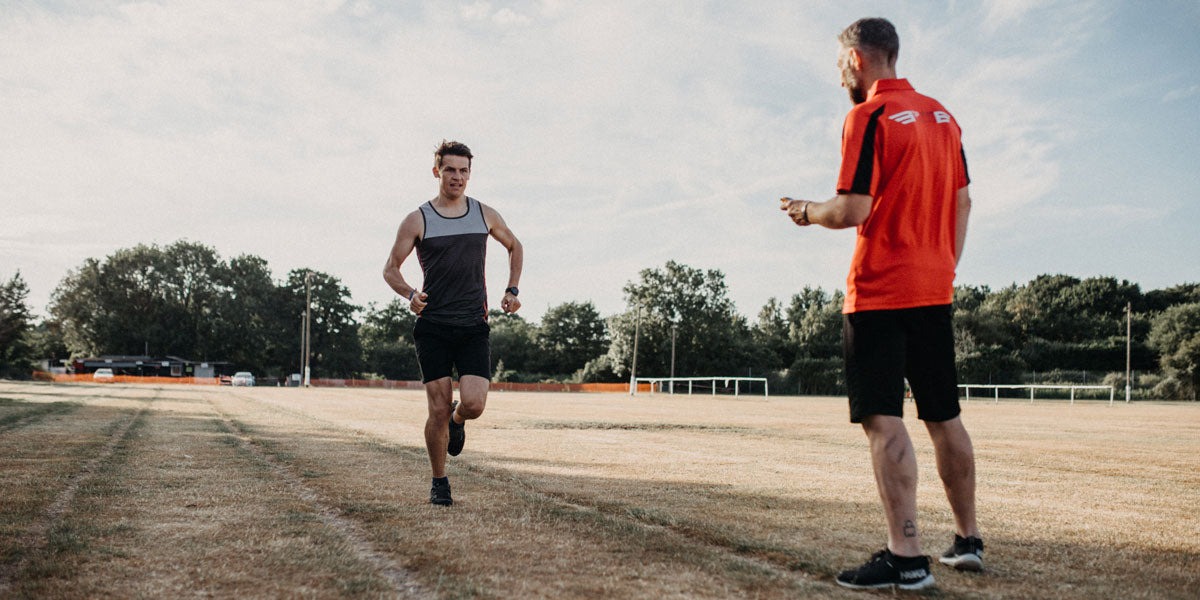

Featured
Why Does Exercise Make Me Sleepy
Modified: January 2, 2024
Discover the surprising connection between exercise and sleepiness. Find out why exercise can sometimes leave you feeling tired and ready for bed. Featured article.
Introduction
Have you ever noticed that after a vigorous workout, you feel surprisingly sleepy? It might seem counterintuitive that exercise, known for boosting energy levels and alertness, can also make you feel ready for a nap. But the phenomenon of exercise-induced sleepiness is quite common and has a scientific explanation behind it.
Whether you’re hitting the gym, going for a run, or engaging in any form of physical activity, it is not uncommon to experience post-exercise drowsiness. This physical response can catch many people off guard, especially those who are accustomed to getting an energy boost from exercise.
In this article, we will explore the science behind exercise-induced sleepiness and understand why it occurs. We will delve into the various mechanisms at play in our body and how they contribute to this curious phenomenon. Additionally, we will discuss the individual and environmental factors that can affect how exercise impacts sleepiness levels, as well as strategies to manage and mitigate these effects.
So, if you’ve ever wondered why exercise occasionally makes you feel sleepy or have encountered this phenomenon firsthand, read on to uncover the fascinating reasons behind it.
The Science behind Exercise and Sleepiness
To understand why exercise can induce sleepiness, it’s important to explore the physiological processes that take place in our bodies during physical activity. Several factors contribute to the onset of post-exercise drowsiness, including the increased production of adenosine, the regulation of body temperature, and the release of endorphins.
One of the key players in exercise-induced sleepiness is adenosine. Adenosine is a naturally occurring substance in the brain that plays a role in promoting sleep. As we exercise, the metabolic activity in our muscles increases, leading to the release of adenosine. This accumulation of adenosine signals to our brain that it’s time for rest and recovery, resulting in a feeling of tiredness.
In addition to adenosine, the regulation of body temperature also contributes to exercise-induced sleepiness. When we engage in physical activity, our body temperature rises. After exercise, our body works to bring the temperature back to normal. This drop in body temperature acts as a signal for our body to prepare for sleep, leading to drowsiness.
Furthermore, exercise triggers the release of endorphins, chemicals in the brain that are responsible for reducing pain and enhancing feelings of pleasure. While endorphins are known for their ability to improve mood and increase energy levels, they can also have a calming effect on the body. The release of endorphins during exercise can promote relaxation and contribute to the feeling of sleepiness afterward.
Additionally, exercise affects the central nervous system, which plays a crucial role in sleep regulation. Physical activity stimulates the production of neurotransmitters such as serotonin and dopamine, which have both energizing and calming effects. The balance of these neurotransmitters, along with other chemical changes in the brain, can contribute to the onset of sleepiness after exercise.
Moreover, exercise can also influence our circadian rhythm, the internal biological clock that regulates our sleep-wake cycle. Regular exercise helps to align our circadian rhythm, promoting better sleep quality. However, the timing and intensity of exercise can also impact sleepiness levels. Exercising in the evening, close to bedtime, can disrupt the natural wind-down process and make it more challenging to fall asleep. On the other hand, moderate-intensity exercise earlier in the day can enhance alertness and promote a healthy sleep-wake cycle.
It’s important to note that exercise-induced sleepiness can vary among individuals. Factors such as age, fitness level, and overall health can influence how each person responds to physical activity. Some individuals may experience a more pronounced increase in sleepiness after exercise, while others may not notice a significant change in their energy levels.
Understanding the underlying mechanisms of exercise-induced sleepiness can help us manage and optimize our post-exercise rest and recovery. In the following sections, we will explore strategies to manage exercise-induced sleepiness and ensure a healthy balance between physical activity and quality sleep.
Increased Production of Adenosine
One of the key factors contributing to exercise-induced sleepiness is the increased production of adenosine in the body. Adenosine is a naturally occurring substance that plays a vital role in regulating sleep and wakefulness.
During exercise, our muscles undergo metabolic processes that produce adenosine as a byproduct. The more intensely we exercise, the higher the levels of adenosine in our body. As adenosine accumulates, it binds to specific receptors in the brain, signaling a need for rest and recovery.
When adenosine binds to its receptors, it inhibits the actions of neurotransmitters involved in wakefulness, such as dopamine and norepinephrine. This inhibition leads to a decrease in alertness and an increase in sleepiness. The higher the levels of adenosine in our body, the more pronounced the effects on our sleep-wake cycle.
It’s worth noting that adenosine levels typically increase throughout the day, peaking in the evening, and decline during sleep. This natural fluctuation helps regulate our sleep-wake cycle. However, engaging in exercise elevates adenosine levels temporarily, intensifying the feeling of sleepiness even during the daytime.
Moreover, adenosine also interacts with other neurotransmitters involved in sleep regulation, such as serotonin and GABA (gamma-aminobutyric acid). These neurotransmitters further enhance the sedative effects of adenosine, contributing to the overall feeling of drowsiness after exercise.
While adenosine’s role in promoting sleep is beneficial for our overall health and recovery, it can be inconvenient for those who experience exercise-induced sleepiness during the day. To manage this, it’s important to be aware of the timing of your exercise and consider adjusting it accordingly. By exercising earlier in the day, you can allow your body to naturally recover from the increase in adenosine levels, minimizing the impact on daytime alertness.
Additionally, it’s important to prioritize adequate rest and sleep after exercising to allow your body to recover fully. By ensuring you get enough quality sleep, you can minimize the lingering effects of adenosine and wake up feeling refreshed and energized.
In the next section, we will explore the role of body temperature regulation in exercise-induced sleepiness and how it contributes to post-exercise drowsiness.
Regulation of Body Temperature
Another crucial factor in understanding exercise-induced sleepiness is the regulation of body temperature. During exercise, our body temperature rises due to increased metabolic activity and the production of heat. This rise in body temperature is an essential response that helps facilitate muscle function and endurance.
However, after exercising, our body needs to cool down and return to its regular temperature. This cooldown process is initiated by the dilation of blood vessels near the skin’s surface, allowing heat to dissipate through the process of vasodilation. As a result, our core body temperature starts to decrease, activating a natural sleep-promoting mechanism.
The drop in body temperature after exercise signals to the body that it’s time to wind down and prepare for sleep. Our body associates a decrease in temperature with the onset of rest and recovery. This decrease in core temperature acts as a cue for the brain to release hormones like melatonin, which promotes sleepiness and helps regulate our sleep-wake cycle.
Furthermore, the decrease in body temperature also affects other physiological processes that contribute to sleepiness. It can slow down nerve conduction, reduce heart rate, and lower blood pressure, all of which promote relaxation and sleep readiness.
It’s important to note that the impact of body temperature regulation on post-exercise sleepiness may vary depending on the exercise intensity and duration. More intense workouts that lead to a significant rise in body temperature are more likely to trigger a subsequent drop, inducing a stronger feeling of sleepiness. On the other hand, shorter or less intense workouts may not provoke as pronounced of a drop in body temperature.
Understanding the role of body temperature regulation in exercise-induced sleepiness can help us optimize our post-workout routine. Taking a warm shower or bath after exercise can expedite the cooldown process and assist in lowering core body temperature. Creating a cool and comfortable sleep environment, such as using a fan or adjusting the thermostat, can also aid in transitioning from exercise to rest and enhance the quality of sleep following physical activity.
Now that we’ve explored the impact of body temperature regulation on exercise-induced sleepiness, let’s delve into the release of endorphins and its role in post-exercise drowsiness.
Release of Endorphins
Exercise is known to trigger the release of endorphins, which are natural “feel-good” chemicals produced by the brain. Endorphins have a significant impact on our mood, pain perception, and overall well-being. While the release of endorphins during exercise is often associated with an increase in energy and a positive mood, it can also contribute to post-exercise sleepiness.
When endorphins are released, they bind to opioid receptors in the brain, resulting in a reduction of pain and an increase in feelings of pleasure and relaxation. This soothing effect can make us feel calm and content, contributing to a sense of sleepiness after exercise.
Additionally, the release of endorphins during exercise can have an impact on our arousal levels. Arousal refers to our level of alertness and wakefulness. Endorphins, while known for their mood-enhancing properties, can also have a sedative effect on the body. This sedation, combined with the natural fatigue that follows physical exertion, can contribute to the feeling of sleepiness after a workout.
It’s important to note that the release of endorphins and its impact on sleepiness levels can vary among individuals. Some people may experience a more pronounced sedative effect of endorphins, leading to increased post-exercise drowsiness. On the other hand, others may not notice a significant change in their energy levels or may even feel more energized after exercise.
While endorphins play a role in regulating our sleep-wake cycle, it’s essential to find a balance between physical activity and maintaining good sleep hygiene. Regular exercise can have numerous benefits for our overall well-being, including better sleep quality. However, exercising too close to bedtime or engaging in overly strenuous workouts can disrupt the winding-down process and make it more challenging to fall asleep.
Managing exercise-induced sleepiness can be achieved by allowing sufficient time to wind down after a workout, creating a relaxing bedtime routine, and ensuring a comfortable sleep environment. These practices can help counterbalance the sleep-inducing effects of endorphins and promote a restful night’s sleep.
In the next section, we will explore how exercise affects the central nervous system and its influence on sleepiness levels.
Effects of Exercise on the Central Nervous System
Exercise not only has physical benefits but also has a profound impact on the central nervous system (CNS), which includes the brain and spinal cord. Physical activity stimulates various physiological processes in the CNS, leading to changes in neurotransmitter levels and overall brain function.
One of the key neurotransmitters affected by exercise is serotonin, a chemical that helps regulate mood, appetite, and sleep. Exercise triggers the release of serotonin in the brain, which contributes to an improved mood, reduced stress levels, and increased feelings of well-being. However, serotonin also has a calming effect on the body, which can contribute to exercise-induced sleepiness.
In addition to serotonin, exercise also influences the production and release of another neurotransmitter called dopamine. Dopamine is involved in reward and pleasure pathways in the brain. It plays a role in motivation, focus, and movement coordination. Exercise stimulates the release of dopamine, leading to a sense of reward and accomplishment. However, intense physical activity can also deplete dopamine levels, contributing to post-exercise fatigue and the onset of sleepiness.
Furthermore, exercise increases the production of glutamate, an excitatory neurotransmitter that promotes brain activity and alertness. The rise in glutamate levels during exercise enhances cognitive function and improves attention and concentration. However, after exercising, the brain’s glutamate levels gradually return to normal, which can contribute to feelings of fatigue and sleepiness.
Exercise also affects the levels of gamma-aminobutyric acid (GABA), a neurotransmitter with inhibitory effects on the CNS. GABA helps calm the brain, reducing anxiety and promoting relaxation. While exercise can temporarily increase levels of GABA, excessive exercise or prolonged exertion can result in GABA depletion, leading to fatigue and sleepiness.
Moreover, exercise promotes neurogenesis, which is the growth and development of new neurons in the brain. This process enhances brain plasticity and cognitive function, contributing to improved sleep quality and overall brain health. However, exercise-induced neurogenesis also requires adequate rest and recovery to fully reap its benefits. Without proper rest, excessive exercise can lead to fatigue and hinder neurogenesis.
Overall, the effects of exercise on the central nervous system are complex and multifaceted. While exercise boosts mood and cognitive function, it can also lead to the release of neurotransmitters that contribute to sleepiness due to their calming and fatigue-inducing effects.
Understanding these effects can help in optimizing exercise routines and balancing physical activity with adequate rest and recovery. In the following sections, we will delve into the influence of exercise on circadian rhythm and individual variations in exercise-induced sleepiness.
Influence of Exercise on Circadian Rhythm
The circadian rhythm is the internal biological clock that regulates our sleep-wake cycle, hormone production, and various physiological processes. It follows a roughly 24-hour cycle, influenced by external cues such as light exposure and physical activity. Exercise has a significant influence on our circadian rhythm and can impact our sleep quality and timing.
Regular exercise helps synchronize our circadian rhythm, promoting a more consistent sleep-wake cycle. Engaging in physical activity during the day exposes us to natural light, which helps regulate our internal clock. The exposure to daylight during exercise stimulates the suprachiasmatic nucleus (SCN) – the master regulator of the circadian rhythm – to align our sleep-wake cycle with the external environment.
However, the timing and intensity of exercise can influence how it affects our circadian rhythm. Exercising too close to bedtime, especially engaging in vigorous activities, can disrupt the natural wind-down process and make it more challenging to fall asleep. This is because exercise increases arousal, body temperature, and heart rate, all of which are counterproductive to the natural sleep-inducing process.
Ideally, it is recommended to complete moderate-intensity exercise at least a few hours before bedtime. This allows ample time for the body to cool down, the heart rate and body temperature to return to normal, and the natural sleep cues to take effect. Mild exercise, such as stretching or relaxation exercises, closer to bedtime, may have a positive impact on sleep quality as it promotes relaxation and stress reduction.
On the other hand, exercising earlier in the day has been shown to have positive effects on sleep quality and circadian rhythm regulation. Morning or midday exercise can help promote alertness and energy during the day, enhance the natural drop in body temperature in the evening, and facilitate the onset of sleep at night. Regular exercise at consistent timings can reinforce the synchronization of the circadian rhythm and establish a healthy sleep-wake pattern.
It’s worth mentioning that individual variations exist regarding the influence of exercise on circadian rhythm. Some individuals may be more sensitive to the timing and intensity of exercise, experiencing a stronger impact on their sleep quality and timing. It is essential to pay attention to your own responses to exercise and adapt your routine accordingly to optimize your sleep-wake cycle.
Paying attention to both the timing and intensity of exercise can help maximize the positive effects on the circadian rhythm, improve sleep quality, and minimize exercise-induced sleepiness. The next sections will explore the relationship between exercise intensity and sleepiness, as well as the individual factors influencing exercise-induced sleepiness.
Exercise Intensity and Sleepiness
The intensity of exercise plays a role in determining the level of sleepiness experienced post-workout. The relationship between exercise intensity and sleepiness is a complex one, with various factors coming into play.
Engaging in moderate-intensity exercise is generally associated with increased energy and arousal levels. Moderate-intensity workouts, such as brisk walking, jogging, or cycling, stimulate the body and promote alertness. This type of exercise can provide a boost of energy and enhance cognitive function, making it less likely to induce immediate sleepiness.
On the other hand, high-intensity exercise, such as intense cardio workouts or weightlifting, can elicit a larger hormonal response and a more significant increase in core body temperature. This can lead to a more substantial feeling of fatigue and sleepiness immediately after the workout. The body’s need for rest and recovery is heightened, resulting in a desire to rest or take a nap.
It’s important to note that sleepiness following high-intensity exercise is not necessarily a negative outcome. It can be a natural response to the physical exertion and indicate that the body needs time to repair and regenerate. Adequate post-exercise rest is crucial, especially after intense workouts, to facilitate recovery and allow the body to fully reap the benefits of exercise.
Exercise duration also plays a role in sleepiness levels. Longer workouts, regardless of intensity, can result in more significant fatigue and a subsequent desire for rest. This is because prolonged physical activity requires more energy expenditure and places greater stress on the body.
Individual differences also influence the relationship between exercise intensity and sleepiness. Factors such as fitness level, age, and overall health can affect how each person responds to exercise. Highly trained athletes, for instance, may experience less post-workout sleepiness compared to sedentary individuals due to their improved cardiovascular efficiency and faster recovery time.
Additionally, personal preference and familiarity with a specific type of exercise can impact sleepiness levels. Some individuals may find certain activities more invigorating and less likely to induce sleepiness, while others may experience the opposite effect.
Understanding the relationship between exercise intensity and sleepiness can help you tailor your workouts to your specific goals and needs. If you want to minimize exercise-induced sleepiness, opting for moderate-intensity exercise earlier in the day may be more suitable. On the other hand, if promoting relaxation and winding down before sleep is your goal, incorporating gentle, low-intensity exercises in the evening may be beneficial.
In the next section, we will explore the individual factors that can influence exercise-induced sleepiness.
Individual Variations in Exercise-Induced Sleepiness
Exercise-induced sleepiness can vary among individuals due to several factors, including age, fitness level, and overall health. Understanding these individual variations can help us better understand why some people may experience more pronounced sleepiness after exercise than others.
Age plays a role in how exercise impacts sleepiness levels. Older adults tend to experience greater post-exercise sleepiness compared to younger individuals. This may be due to age-related changes in the body’s ability to regulate sleep-wake cycles and recover from physical exertion. Additionally, older adults may have different sleep needs and may require more restorative sleep to recover from exercise.
Fitness level also influences how exercise affects sleepiness. Those who are more physically fit often have better cardiovascular health and greater endurance, allowing them to recover faster from exercise. Highly trained athletes may experience less sleepiness post-exercise, as their bodies are more efficient at recovery and maintaining energy levels. On the other hand, individuals with lower fitness levels may experience more significant fatigue and sleepiness following physical activity.
Overall health and underlying medical conditions can also impact exercise-induced sleepiness. Chronic conditions, such as sleep disorders or certain illnesses, may heighten sleepiness levels after exercise. Medications and their side effects can also influence post-workout sleepiness. It’s important for individuals with specific health concerns to consult with their healthcare professionals to understand how exercise may impact their sleepiness levels and overall well-being.
Additionally, personal tolerance and adaptation to exercise play a role in individual variations. Some individuals may naturally be more sensitive to the effects of exercise on sleepiness, while others may not experience a noticeable change in their energy levels. Regular exercisers may become accustomed to the post-workout sleepiness and adapt to it over time. A consistent exercise routine can help regulate sleep patterns and potentially reduce feelings of sleepiness after physical activity.
Lastly, psychological factors, such as stress levels and mood, can influence how exercise affects sleepiness. Stress and negative moods can enhance feelings of fatigue and sleepiness, while positive moods and reduced stress levels can counteract these effects. Engaging in exercise as a form of stress relief and mood enhancement can improve overall well-being and minimize post-exercise sleepiness.
Understanding individual variations in exercise-induced sleepiness can help individuals tailor their exercise routine and sleep management strategies accordingly. It highlights the importance of recognizing personal responses to exercise and addressing specific factors that may impact sleepiness levels.
In the next section, we will explore strategies and tips to manage exercise-induced sleepiness and maintain a healthy balance between physical activity and rest.
Factors Affecting Exercise-Induced Sleepiness
Several factors can contribute to the level of sleepiness experienced after exercise. Understanding these factors can help individuals better manage exercise-induced sleepiness and optimize their post-workout rest and recovery.
1. Exercise Timing: The timing of your exercise can significantly impact sleepiness levels. Exercising earlier in the day can help regulate the circadian rhythm and promote alertness during the day. Conversely, engaging in intense physical activity close to bedtime can disrupt the natural wind-down process and make it more challenging to fall asleep.
2. Exercise Intensity and Duration: The intensity and duration of exercise play a role in determining the level of sleepiness experienced. High-intensity workouts and longer durations can lead to greater fatigue and sleepiness due to increased physical exertion. Moderate-intensity exercise, on the other hand, may provide an energy boost and promote wakefulness.
3. Age: Age can influence how exercise impacts sleepiness. Older adults may experience more pronounced post-exercise sleepiness due to changes in their sleep-wake cycle and reduced ability to recover from physical exertion.
4. Fitness Level: Individuals with higher fitness levels may experience less sleepiness after exercise, thanks to their enhanced cardiovascular health and faster recovery. Regular exercisers may have adapted to the post-workout sleepiness and have a more regulated sleep pattern.
5. Overall Health: Underlying health conditions and medications can affect sleepiness levels post-exercise. Chronic illnesses and certain medications can contribute to increased fatigue and sleepiness, while optimal health can mitigate these effects.
6. Personal Response: Each individual may have a unique response to exercise-induced sleepiness. Some individuals may be more sensitive to the effects of exercise and experience more significant sleepiness, while others may not notice a significant change in their energy levels.
7. Psychological Factors: Stress levels and mood can influence sleepiness after exercise. Higher stress levels and negative moods can increase feelings of fatigue and sleepiness, while exercise can help reduce stress and enhance mood, counteracting these effects.
8. Environmental Factors: Environmental factors, such as temperature and lighting, can impact sleepiness levels. Exercising in a cooler environment can help counteract the rise in body temperature and minimize sleepiness. Exposure to natural light during exercise can have positive effects on the circadian rhythm and promote wakefulness during the day.
It’s important to recognize that these factors can vary among individuals and may require some experimentation to find the optimal exercise routine that minimizes sleepiness and maximizes the overall benefits of physical activity. Paying attention to your body’s responses and listening to your own needs and preferences is key in managing exercise-induced sleepiness effectively.
In the next section, we will explore strategies and tips to manage exercise-induced sleepiness and strike a balance between physical activity and optimal rest.
Strategies to Manage Exercise-Induced Sleepiness
While exercise-induced sleepiness can be a natural response to physical activity, there are various strategies and tips that can help manage and mitigate its effects. Implementing these strategies can assist in striking a balance between regular exercise and maintaining optimal rest and wakefulness:
1. Consider Exercise Timing: Pay attention to the timing of your workouts and find what works best for you. Exercising earlier in the day can help boost energy levels and promote wakefulness throughout the day. If you prefer exercising in the evening, try to complete your workout at least a few hours before bedtime to allow for a wind-down period.
2. Adjust Exercise Intensity: Experiment with different exercise intensities to find a balance that suits your needs. While high-intensity workouts can lead to greater sleepiness, moderate-intensity exercise can provide an energy boost without inducing immediate drowsiness. Choose the level of intensity that aligns with your energy levels and desired outcomes.
3. Create a Cool-Down Routine: Incorporate a cool-down routine after exercise to regulate your body temperature and aid in the transition from exercise to rest. Consider stretching, yoga, or relaxation exercises to promote relaxation and reduce post-workout sleepiness.
4. Prioritize Rest and Recovery: Allow for sufficient time for rest and recovery after exercise. Ensure that you are getting enough quality sleep to support your body’s rejuvenation process. Create a conducive sleep environment by keeping your bedroom cool, dark, and quiet.
5. Pay Attention to Nutrition: Proper nutrition is essential to support energy levels and recovery. Fuel your body with a balanced diet that includes carbohydrates, proteins, and healthy fats. Stay hydrated throughout the day and consider having a small post-workout snack that combines protein and carbohydrates to provide sustained energy.
6. Optimize Sleep Hygiene: Establish a consistent sleep routine and practice good sleep hygiene. Create a relaxing bedtime routine that includes activities such as reading, taking a warm bath, or practicing relaxation techniques to prepare your body and mind for sleep.
7. Listen to Your Body: Pay attention to your body’s signals and adjust your exercise routine accordingly. If you consistently experience excessive sleepiness after exercise, consider reducing the intensity or duration of your workouts. On the other hand, if you’re not feeling challenged enough, you may need to increase the intensity or try new activities.
8. Manage Stress: High stress levels can contribute to feelings of fatigue and sleepiness. Incorporate stress management techniques into your daily routine, such as mindfulness, meditation, or engaging in activities you enjoy. Finding healthy ways to cope with stress can help improve overall energy levels and mitigate exercise-induced sleepiness.
Remember that everyone’s response to exercise is unique, so it’s important to experiment and find what works best for you. Adjusting your exercise routine, sleep habits, and overall lifestyle based on your individual needs and preferences can help you manage exercise-induced sleepiness effectively and achieve a healthy balance between physical activity and optimal rest.
With the right strategies in place, you can enjoy the benefits of exercise while minimizing post-workout sleepiness and maximizing your overall well-being.
Conclusion
Exercise-induced sleepiness can sometimes catch us off guard, as exercise is typically associated with increased energy and alertness. However, the phenomenon of feeling sleepy after a workout is quite common and has a scientific explanation behind it.
Several factors contribute to exercise-induced sleepiness, including the increased production of adenosine, regulation of body temperature, release of endorphins, effects on the central nervous system, influence on circadian rhythm, exercise intensity, individual variations, and various other factors.
Understanding these mechanisms and factors can help us better manage exercise-induced sleepiness. By paying attention to exercise timing, adjusting exercise intensity, establishing a cool-down routine, prioritizing rest and recovery, practicing good sleep hygiene, and managing stress, we can optimize our post-workout rest and maintain a healthy balance between physical activity and sleep.
It’s important to remember that individual variations exist, and what works for one person may not work for another. Listening to our bodies, observing how different factors affect us personally, and making adjustments accordingly are key in managing exercise-induced sleepiness effectively.
Exercise is a vital component of a healthy lifestyle, providing numerous physical and mental health benefits. By understanding the factors that contribute to exercise-induced sleepiness and implementing strategies to manage it, we can continue to reap the rewards of exercise while ensuring we maintain adequate rest and rejuvenation.
So, the next time you feel sleepy after a workout, embrace it as a natural response and take the time to recover and recharge. Use the strategies outlined in this article to optimize your exercise routine and create a healthy balance between physical activity and quality sleep.






